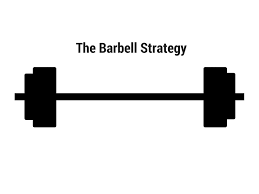Tha Atomic Portfolio
Putting the ideas to work – Part I.
Paul Graham put out an essay last year pointing out curiosity as one of the three ingredients to be able to think independently. Independent thinking, as they say is a critical tool on the path to success. In investing, independent thinking manifests itself in the form of better performance. In life too, it allows you to chart your own path to success.
Curiosity is a natural human tendency. Trying to fill our knowledge gaps is somewhat innate to us. But you are only curious about what you already know . The more you let your mind stay in a state of osmosis, absorbing and learning what interests you, the more curious you get. But absorbing information and doing nothing about it can also lead to inaction. How do you know your understanding of what you've absorbed is robust if you have not battle-tested it? And how do you improve your ability to think clearly if you have not garnered enough feedback?
What if there was an effective way to make that happen and putting your ideas to test? Lets call it the Atomic Portfolio. A basket of the best ideas (long-only, for now) rank-ordered by the level of conviction one can build.
How would the Atomic Portfolio look like? What principles would it be built on? What rules would it be driven by? What would it be benchmarked against?
In Part I of this series of posts, let me take you through some of the first principles on which the Atomic Portfolio could be constructed upon.
First principles
The barbell:
Nassim Taleb talks about it in the Black Swan. Paul Enright has openly discussed this on his twitter. In the investing world, this translates to exposing a substantial part of the Atomic Portfolio to relatively safe bets (like broader market funds or securities) (lets say 60-70%) where risk and returns can be predicted with a high-degree of certainty. The other part would be for the ideas with asymmetric return possibilities, where higher risk and uncertainty by a return much higher than the broader market. These could be tactical ideas, long-term secular/macro bets or a mispriced stock with a substantial return potential.
The barbell strategy can cascade down to the security level as well within an asset class or can even be used as a lens to view your risk exposure.
While this could be refined and adapted as per requirements, I feel the barbell could be very effective when you construct a portfolio from scratch.
Don't be stupid:
It is remarkable how much long-term advantage people like us have gotten by trying to be consistently not stupid, instead of trying to be very intelligent - Charlie Munger
I wrote about The principle of Stupidity Aversion here last year. This could be a very apt first principle for the Atomic portfolio. Adding via subtracting (avoiding the ideas that wouldn't fit). Winning by not losing. Not taking risks that would end this game. Working with ideas that are more likely to succeed depending on my how well I've understood them. Just not being stupid.
Adaptive:
A bit of flexibility never hurt anyone, especially in investing. The Atomic Portfolio would be flexible to change tact when something is not working. It'll admit when it is wrong and would be open about what it does not know. It will try to adapt to the environment it is operating under.
Diversified, most of the time:
While some of the best returns in the record books have been delivered by investors heavily concentrating their bets (Warren Buffet, Stanley Druckenmiller, George Soros etc. ), the Atomic Portfolio would be diversified, most of the time. Its practical and an effective way to spread the odds of success over a number of ideas and lower risk at the same time. No one is right 100% of the time, and being diversified lowers your downside when you're wrong or just unlucky.
Diversification levels should change inversely to conviction, which is a function of your understanding of the idea and your competence to navigate your way when executing it. The Atomic Portfolio will be driven by the same principle.
Process over outcomes:
Resulting is ubiquitous in the investing world. It is easy to proclaim victory on results ie the returns without paying enough attention to the underlying process to get to the results. It is hard to separate out luck from skill at times, but focusing on the underlying process from idea generation, to thesis to execution, and improving it over many iterations is likely to help you be right more often. Returns are key for the Atomic Portfolio as well, it is not the only goal. The process would take precedence over the outcome.
Thank you for reading!
Part II will take you through choosing a benchmark, how to best do it and what could the benchmark for the Atomic Portfolio look like.
See you next time,
The Atomic Investor


